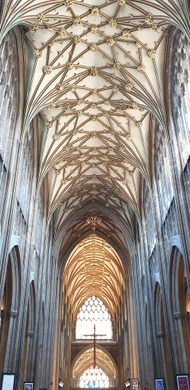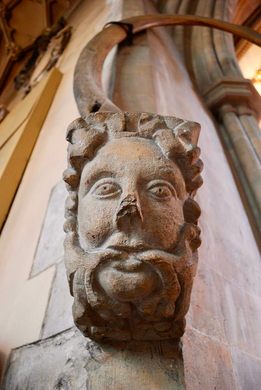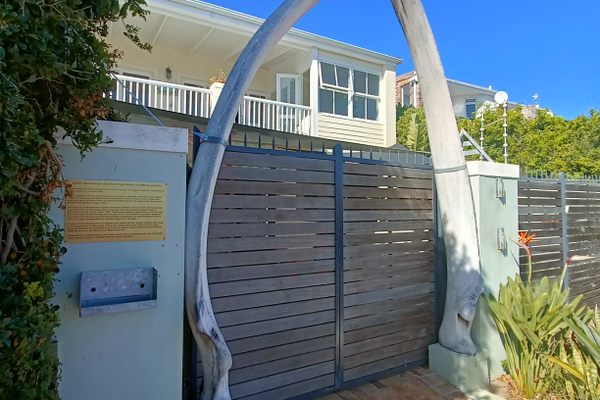John Cabot's Whalebone
A 15th-century whalebone is tucked away in an unassuming corner of this medieval church.
A centerpiece of historical Bristol, England, the Church of St. Mary the Virgin, more commonly known as St. Mary Redcliffe, is a breathtaking Gothic structure with intricate stone carvings and stained glass. The church has been standing for eight centuries and was even called “The fairest, goodliest and most famous parish church in England” by Queen Elizabeth I. But beyond its architectural marvels, the church holds a secret: a 15th-century whalebone.
Tucked away in the church’s St. John’s Chapel, the whalebone perches atop a Greenman figure. The Greenman, often depicted as a face surrounded by foliage, symbolizes rebirth and the cycle of growth, and fertility. Its presence signifies life, growth, and the enduring connection between humanity and the natural world.
In Christian iconography, the Greenman represents resurrection and the interconnectedness of nature and spirituality. This pagan-rooted motif found its way into medieval church architecture, embodying the fusion of Christian beliefs with pre-existing cultural symbols. The enigmatic expression of the green man serves as a reminder of the eternal cycle of life, death, and regeneration.
The whalebone that perches atop the Greenman bracket is said to have been from Italian explorer John Cabot’s maritime adventures. In 1497, Giovanni Caboto (known in English history as John Cabot) set out on a wooden sailing ship, The Matthew, from Bristol, England. The English government backed the expedition which sought an alternative sea route to the riches of the East.
Instead of finding India, Cabot most ended up landing in Nova Scotia, where he picked up this whalebone. This is how England got possession of a very large part of the continent of North America. When it was first discovered, scholars believed the bone belonged to a massive cow. The whalebone demonstrates the church’s connection to maritime exploration.
Know Before You Go
St. Mary Redcliffe Church is open to visitors from 8 a.m. to 5 p.m. Monday through Saturday. On Sundays, the church is open from noon till 4:30 p.m. The whalebone can be seen in St John's Chapel near the northern entrance to the church.





















Follow us on Twitter to get the latest on the world's hidden wonders.
Like us on Facebook to get the latest on the world's hidden wonders.
Follow us on Twitter Like us on Facebook